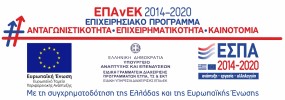Application For Monitoring of Coastal Marine Litter – Island of Rhenia Municipality of Mykonos
The Athanasios K. Laskaridis Foundation and the Department of Marine Sciences of the University of the Aegean joined forces with the companies GET and SciDrones to monitor the timeless plastic litter pollution in Greece using state-of-the-art technologies, in a place of great archaeological and environmental significance in Greece, the island of Rineia.
Rineia, an uninhabited island located near Mykonos and Delos, has 43 km of coastline. It functioned as a place of birth and burial of the inhabitants of Delos and during the first years of the Peloponnesian War (426/425 BC), it was transformed into a necropolis when the Athenians imposed the purge on the island of Delos. It has a natural harbor and multiple bays that make Rineia an ideal place for environmental monitoring of plastic litter pollution.
The pollution is being recorded using Unmanned Aerial Vehicle Systems (UAVs or drones) and contributes feedback to the Coastal Marine Litter Observatory (CMLO) developed by the University of the Aegean in cooperation with GET. The analysis of aerial images is done in a fully automated way, by using artificial intelligence and cloud computing techniques. The results are featured in an innovative online open-source Geographic Information System (GIS) providing full access to the general public, created in collaboration with the company Geospatial Technologies (GET).
The application generates density maps of plastic litter pollution in the coastal zone, allows the statistical analysis of time series data, and provides direct access to real data. The data collection is done, through a specialized protocol developed by the company SciDrones.
The density maps of plastic litter pollution of Rhenia island for the summer of 2021 are now available here http://mrsg-srv.lesvos.aegean.gr/marinelitter/sdi/, following the activities that took place during summer.
The methodology used to process the data involves classification with artificial intelligence algorithms, based on whether the images collected, and therefore the area on the ground they depict, contain marine litter or not. In order to be able to optimally interpret the finding of marine litter and therefore the visualization of their concentration, the number of positively classified images contained in 100 square meters for each sampling area is calculated.
Important for the development of the project is expected to be the role of local stakeholders that will participate in information, awareness, and technology transfer.
The innovative Spatio-temporal recording of plastic pollution in a place with minimal human intervention is expected to be the first documented observation of plastic pollution on a large scale in Greece. In addition, it is expected to contribute to the monitoring of plastic reduction policies in the European Union and provide a basis for reliable large-scale scientific Spatio-temporal observations.

TECHNOLOGY
- PostgreSQL
- PostGIS
- Geoserver
- GeoWebCache
- Geonetwork Opensource
- GET SDI PORTAL






